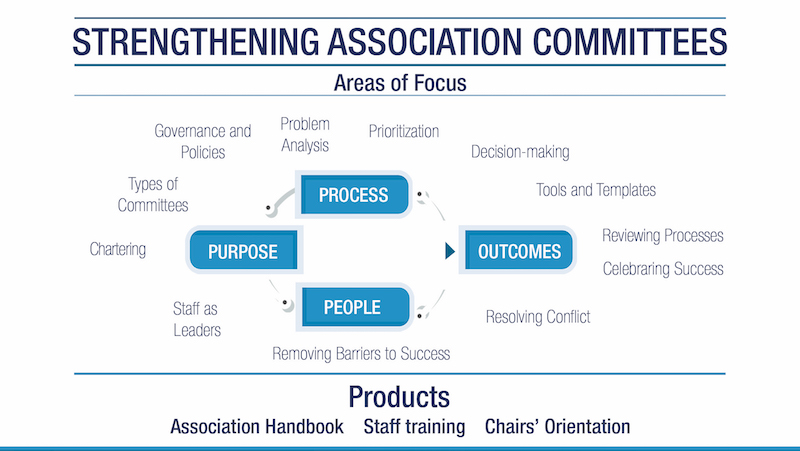Committees offer the promise of addressing critical issues that affect an association’s sector or profession. Committees can help deliver results on governance issues, advocacy initiatives, or new programs for members. But they can also generate risks and even peril to associations.
Impact of Staff Satisfaction
During some recent work with a national Canadian association, I was surprised by feedback from its senior staff. Specifically, they reported that engagement with their committee responsibilities generated more than 50% of their job stress but provided less than a quarter of their overall job satisfaction.
This came from a pretty successful group, corroborated by a recent member survey, which supported the need to make an already good committee system better. I can only imagine the experience of staff when the association committee system isn’t working well – that’s the peril.
If Committees are going to live up to their promise, the committee system must generate increased member value, decrease staff stress and increase both member and staff satisfaction.
Components of a Sound Committee System
A sound system will enable the chartering of new committees that make decisions, solve problems and celebrate success. It will have tools and templates to make the work of committees simpler and more effective. It will provide support to chairs and staff leaders to be comfortable leading teams, resolving conflict and generating results.
To achieve this, associations can benefit from three products:
- An Association Handbook – providing common guidelines and resources for all committees
- Staff Professional Development – enabling staff to act skillfully and confidently as leaders; and
- Chairs’ Orientation – building an informed and supportive relationship between Chairs and staff; both acting as co-leader/facilitators.
Our experience with dozens of associations and many more companies has demonstrated that three elements are necessary: committees must be established with a clear purpose; meetings must be conducted using effective tools and templates for problem solving and decision-making; and people must approach their meeting interactions using effective interpersonal skills. This is the recipe for successful outcomes, which in turn drives increased member satisfaction, decreased staff stress and increased staff satisfaction.
Strengthening an association’s committee system can be a priority. I would welcome the opportunity to discuss how you can make this happen in your association.

